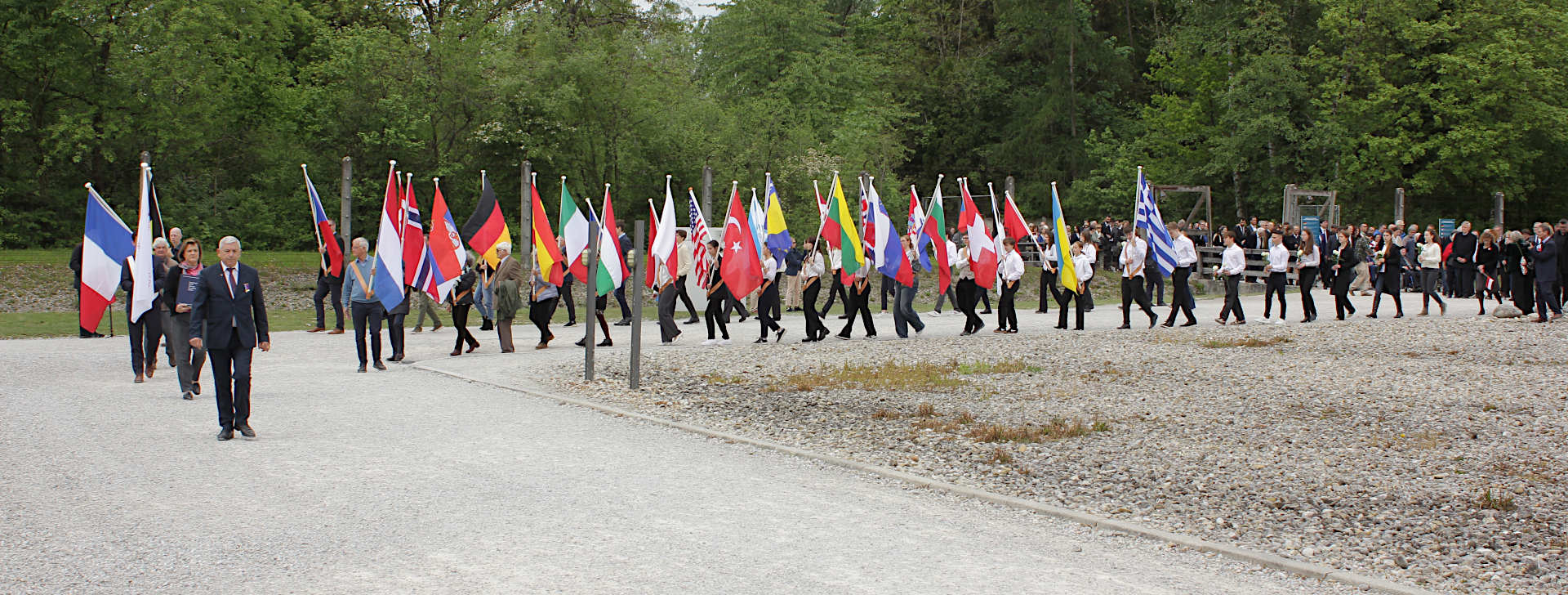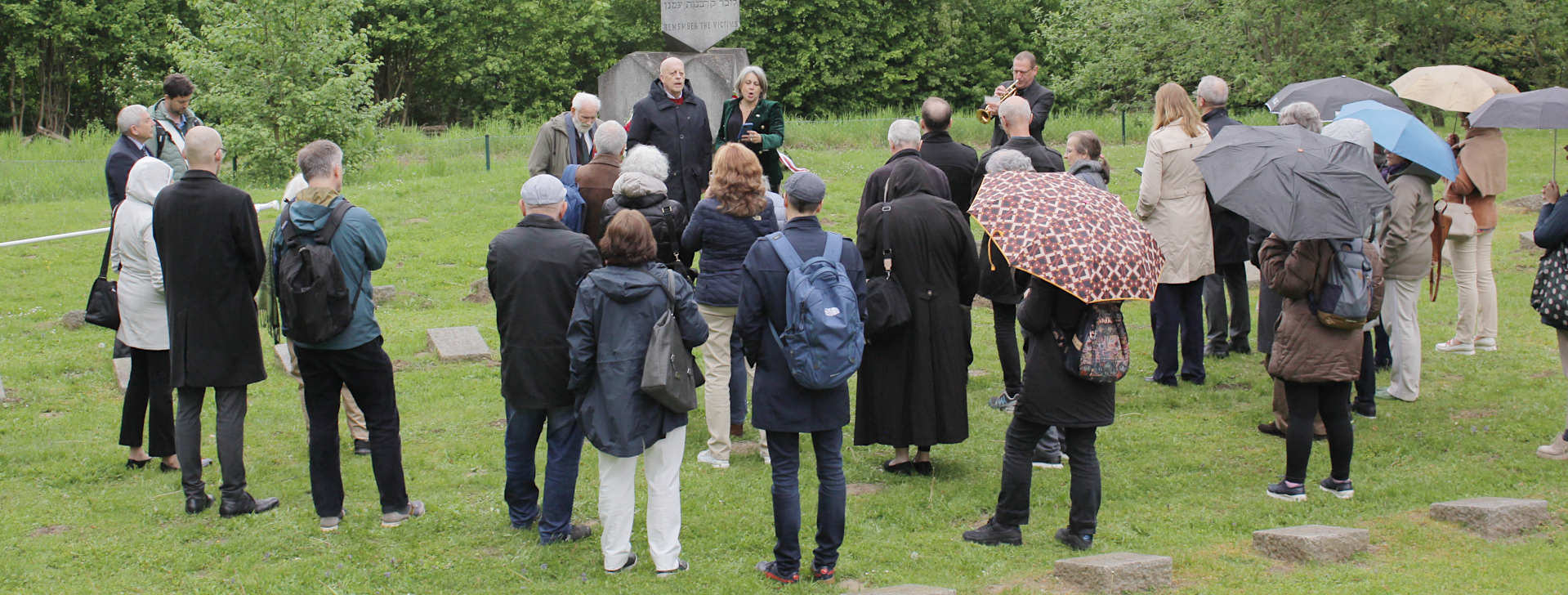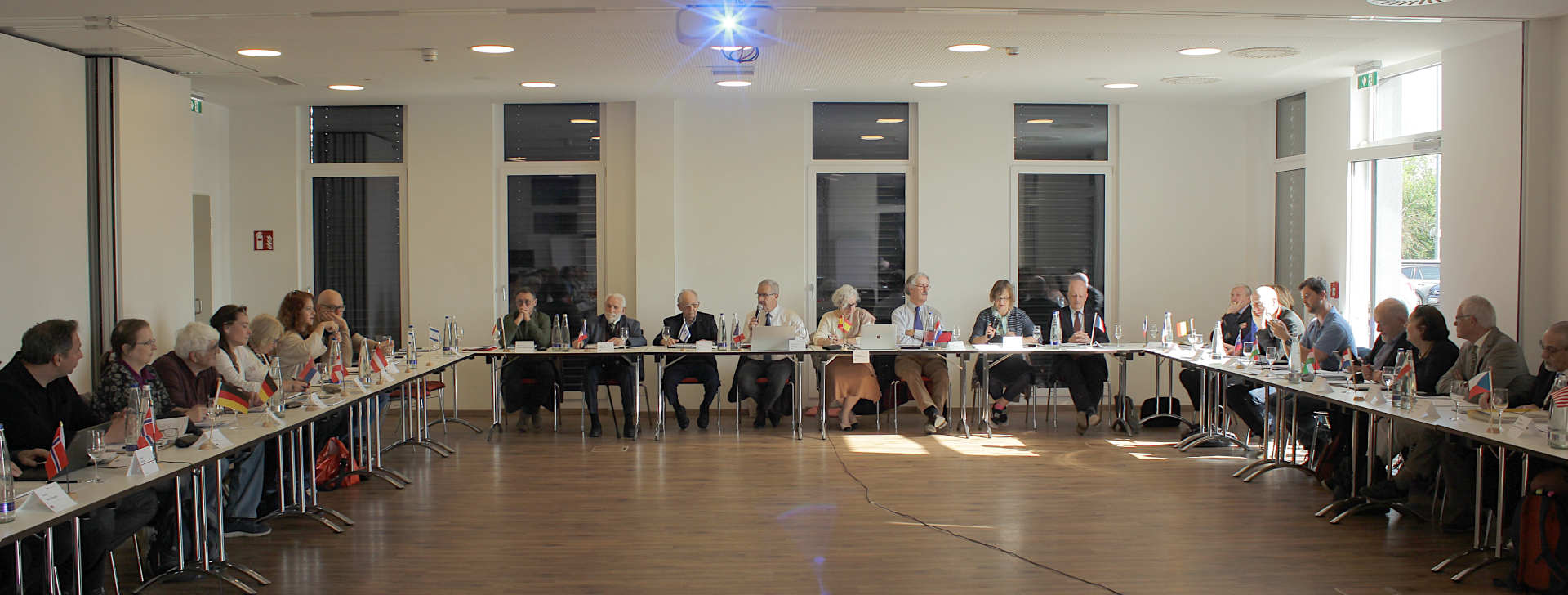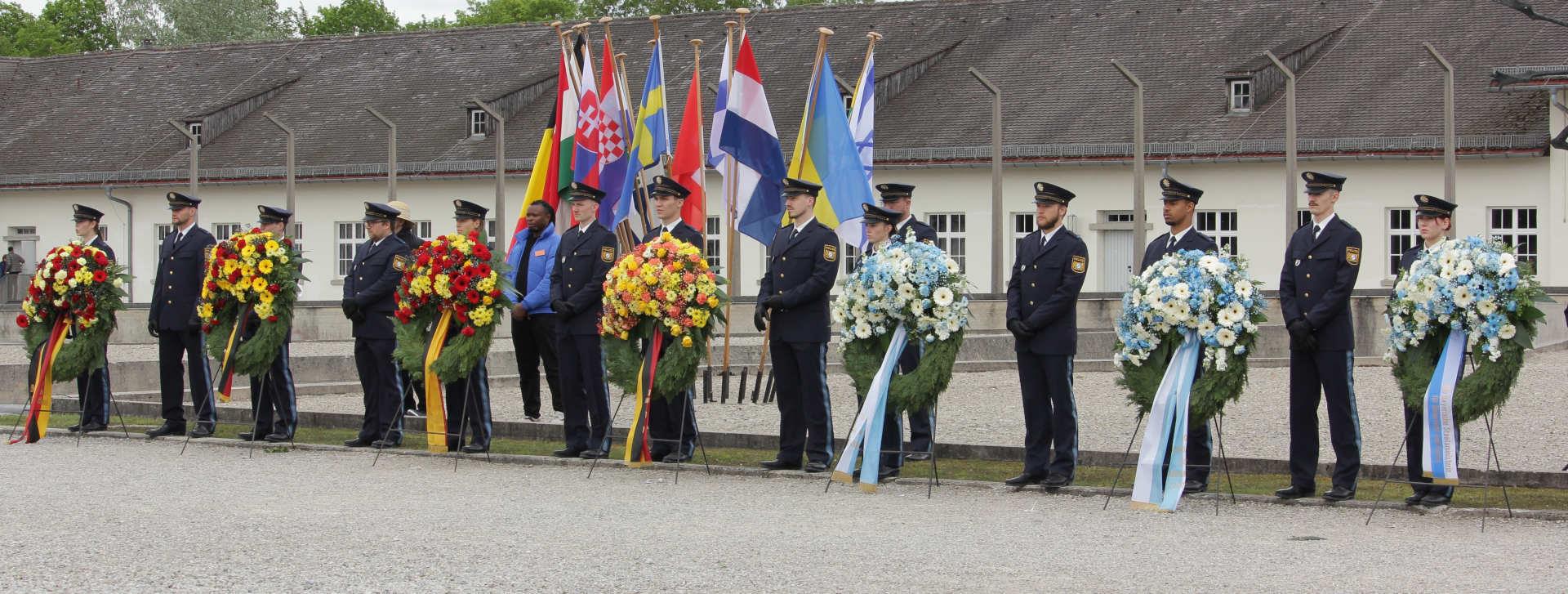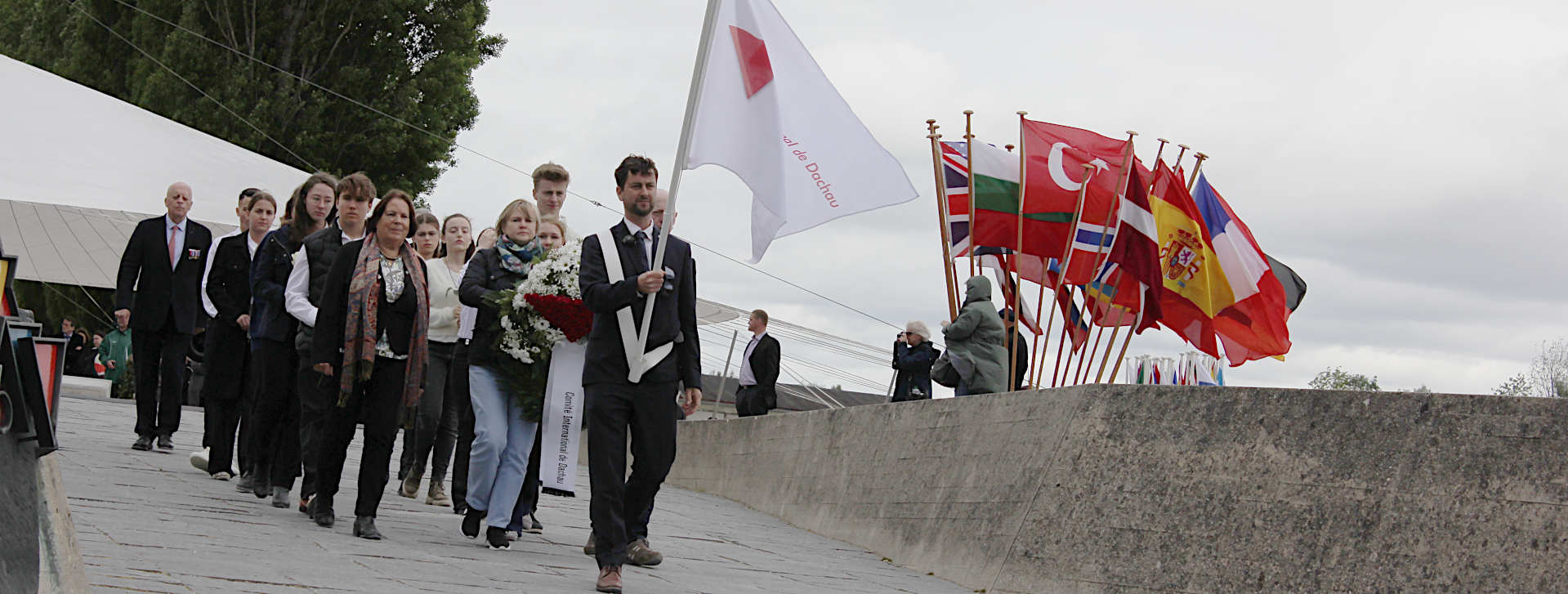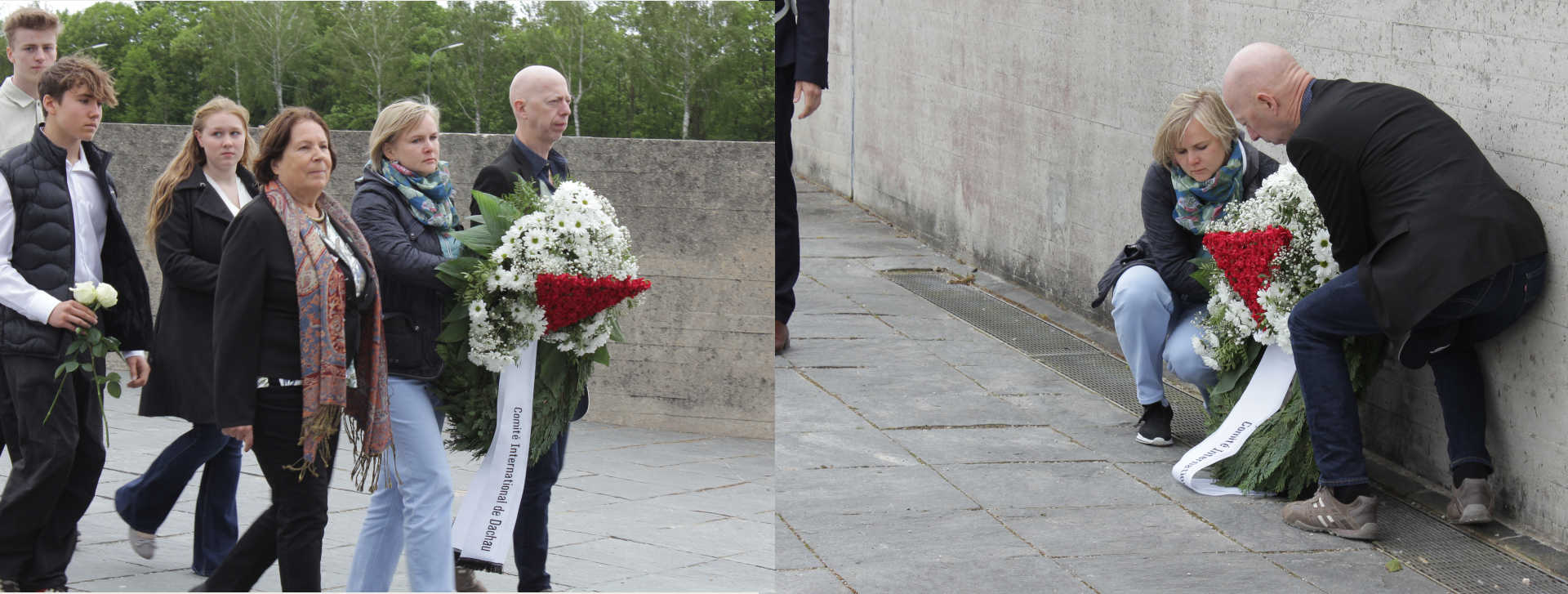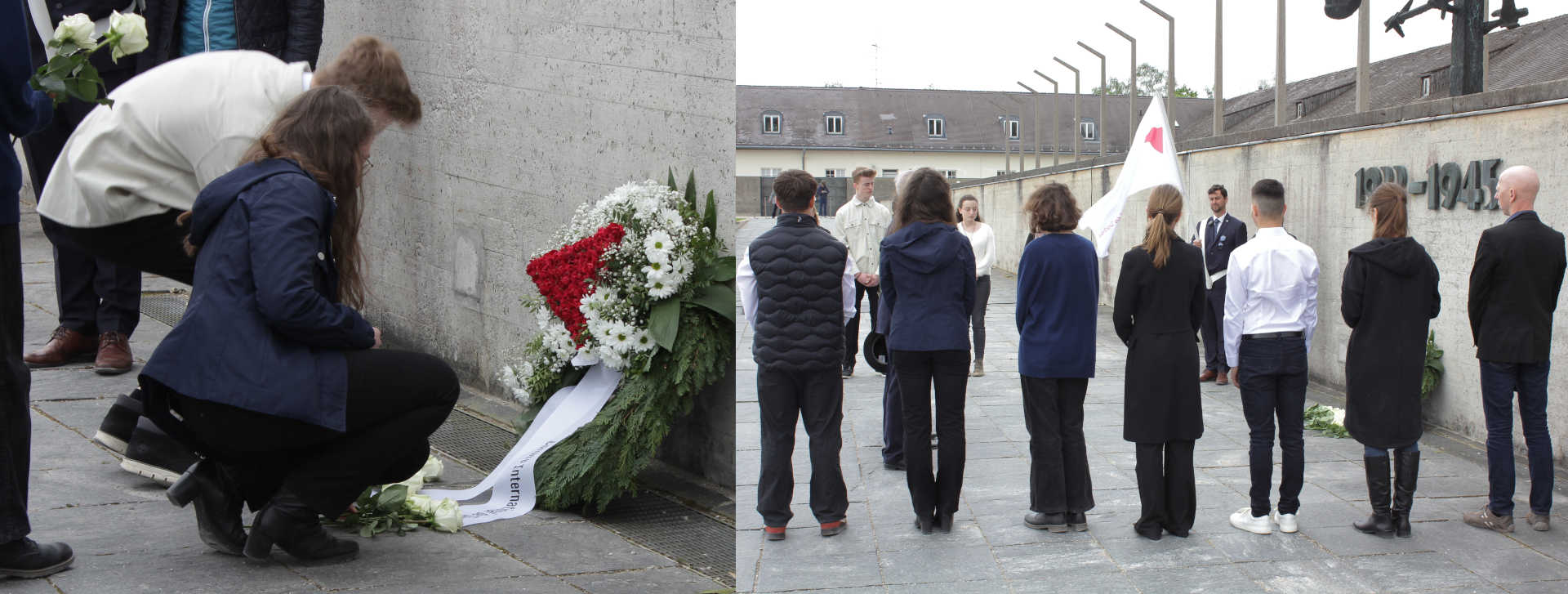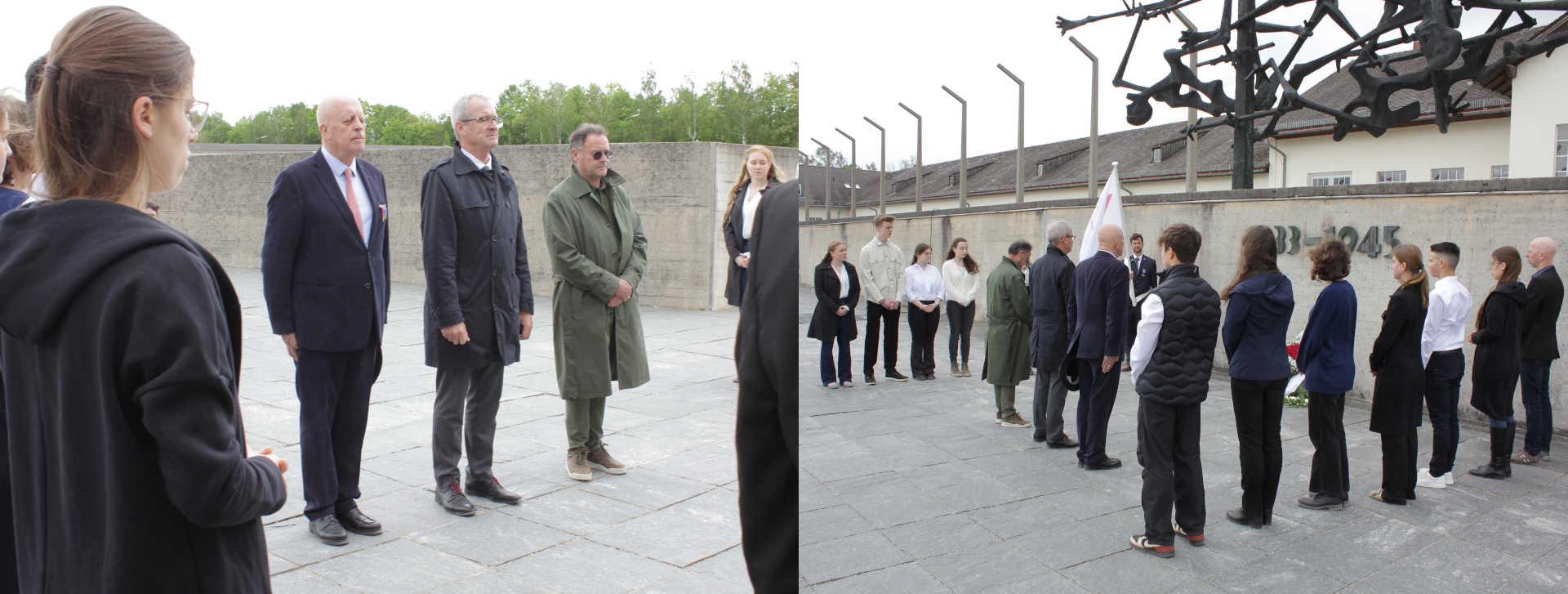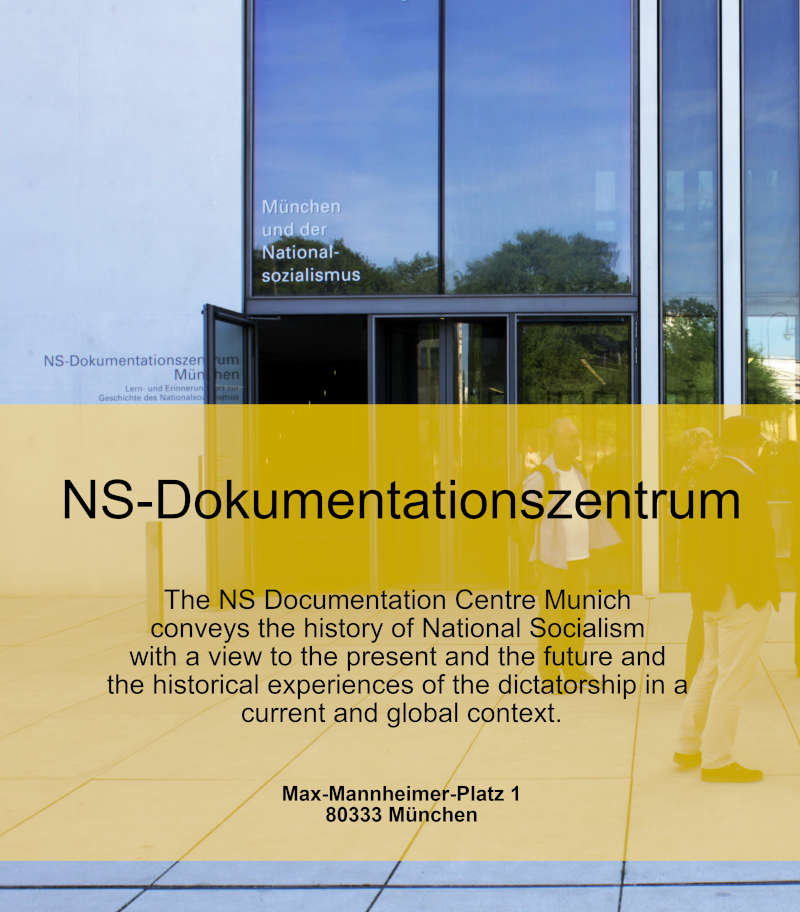Visit to the nsdoku in Munchen
Visit to the Documentation Centre for the History of National Socialism (Munich)
On the morning of Saturday 29 April, members of the Amicale française de Dachau visited the Documentation Centre on the History of National Socialism (NS-Dokumentationszentrum München) in the company of two French-speaking guides.
Opened to the public in April 2015 to mark the 70th anniversary of the liberation of Munich, this fabulous museum provides detailed explanations of the creation and rise to power of the Nazi regime, as well as its aftermath and the future direction of society. It is therefore a place of historical education, but also of political questioning with a resolutely forward-looking approach.
The museum is located in a particularly symbolic place. Firstly, because it was in Munich that the National Socialist Party was founded, and the city remained its headquarters until the end of the Second World War. More specifically, because the museum is located on the very site of the "Brown House", the headquarters of the Nazi party, which was almost completely destroyed by Allied bombing raids. Its ruins were finally removed in 1947, leaving the site vacant until 2011, when work began on the museum. NSDocumentationsCentre
NSDocumentationsCentre
Inside, there are four floors of historical learning, with one floor dedicated to temporary exhibitions and three floors reserved for the permanent exhibition. Our guides took us through the permanent exhibition for almost two hours. The two hours were packed with information, but left many of us with a taste of too little, given how much our fascinating guides had to say on the subject!
With its large-format illustrated panels and a host of multimedia resources for more in-depth study of the themes and elements covered on the panels, it's true that the permanent exhibition would almost merit a full day's visit. But for us, new visitors, it was a very rewarding first approach.
With these large panels displaying photos and documents from the period, our guides took us on a chronological tour, initially covering the period 1918-1933, to introduce us to the particular social and political context that enabled the Nazi party, initially marginal, to become a mass party.
 Image Sandra Quentin NSDOc centre
Image Sandra Quentin NSDOc centre
We go back to the end of the First World War and the birth of the Weimar Republic, which succeeded the Second Reich in an extremely troubled political and economic climate. A section of the population and certain politicians were outraged by the signing of the Treaty of Versailles, which they considered humiliating. Disarmed and forced to pay heavy compensation to the Allied nations, Germany suffered economically and socially, and the consequences were not long in coming: the Communists attempted a revolution in 1919, followed by a coup d'état by the extreme right in 1920.
Against this backdrop, a certain Adolf Hitler, a veteran of the First World War but a complete unknown, appeared on the political scene. In 1919, he joined the German Workers' Party (DAP), where he quickly made a name for himself as an orator. He was also an excellent organiser, organising many meetings for this small group, which within a few months became a real political party with a programme. Renamed the "National Socialist German Workers' Party" (NSDAP) on 24 February 1920, the party we more commonly call the "Nazi Party" was born. Its members were openly racist, anti-Semitic, anti-Democratic, anti-Marxist, belligerent and revengeful, and their dream was to make Germany great again. And that necessarily meant abrogating the Treaty of Versailles. Encouraged and supported by the nationalist and anti-Semitic circles in Munich, the Nazi party presented a programme that appealed to a German people baffled by defeat and burdened by economic sanctions. But in its early days, this reactionary and marginal movement was still opposed to a liberal and democratic Munich. But as the years went by, the party prospered. Hitler ousted its leaders and moved closer to the upper echelons of Munich... In the autumn of 1923, Bavaria was on the verge of breaking away from Berlin. On 8 and 9 November, Hitler took advantage of the tense political climate to try to seize power with the help of the SA (the Nazi party's paramilitary organisation). But he failed. His failed putsch landed him in prison, where he would write Mein Kampf, but it also gave him a certain notoriety. It was also a key event in the history of National Socialism, in that it made Hitler realise that he would not be able to establish his own government legaly.
In December 1924, Hitler was released from prison and returned to a very weakened Nazi party which, until 1929, obtained only a very small percentage of the vote in elections. But during these years, Hitler worked tirelessly within his party, which he structured and hierarchised. It was also at this time that, feeling that he was losing control of the SA, he created his own personal guard: the SS.
In 1929, the world economic crisis hit. Germany was hit hard, and the dissatisfied German population turned more towards the extremes. The Nazi party gained an ever-growing following.
By 1932, unemployment had risen to 25% of the German workforce, and the state was no longer even able to compensate the unemployed. Discontent was growing, and the people were looking for a saviour. For Hitler, who had promised the Germans (at least the Aryan Germans) the best of everything, this was an unhoped-for chance to come to power legally. In July 1932, he obtained a majority of votes in Parliament and, in January 1933, he was appointed Chancellor, enabling him to legally establish Nazism in Germany.
These are the broad outlines of the circumstances that enabled an openly racist party to come to power. But we still have to understand how the Nazis managed to establish their authority. So our guides took us on a tour of a second slice of history, from 1933 to 1939, just before the outbreak of the Second World War.

The second part of the exhibition retraces the destruction of democracy and the establishment of a dictatorship of terror.
As Chancellor, Hitler set about destroying all forms of opposition. And things happened quickly. In February 1933, having been Chancellor for barely a month, Hitler banned the Socialist, Communist and Democratic parties. The reason, or rather the pretext? The burning of the Reichstag, the seat of the German Parliament in Berlin, on the night of 27-28 February 1933. The Nazis attributed this criminal act to a Communist plot and a campaign of repression against left-wing opponents followed. Even today, the motives of the criminals remain a mystery. Was it a criminal act that was exploited by the Nazis for political ends? Some even claim that it was a Nazi-sponsored operation to justify a hardening of the regime...
On 22 March 1933, the Nazi regime brought the first prisoners, political opponents, to the newly created Dachau concentration camp.
In July, the Nazi party became the only legal party. On 30 June 1934, it was the Night of the Long Knives, during which Hitler got rid of the SA with the help of his personal guard, the SS. Since coming to power, Hitler had had to deal with tensions between the SA and the conservative parties and the army of the Weimar Republic. Hitler's ambition was to succeed President Hindenburg, and to do that he needed the support of the conservative parties and the army...
In August 1934, Hindenburg died, leaving the way clear for Hitler to combine the functions of Chancellor and President. Nazism was now firmly entrenched in Germany.
Over the years, Nazi ideology spread to all areas of life, including art and culture. The cultural diversity of modernism, considered "degenerate", was banned. The exclusion of those who did not fit in with Nazi racial ideology, particularly Jews, turned into persecution. Some German citizens decided to join the action. Others simply looked the other way. Opposition to the Nazi regime did exist (in the Church, for example), but very few people dared to translate their thoughts into action, as it was well known that the Nazis severely punished their opponents.
On 10 November 1938, the beginnings of the Shoah were already taking shape: it was Kristallnacht, a pogrom against the Jews ordered by Hitler and carried out by his henchmen, but officially presented by the Nazi leaders as a spontaneous reaction by the population following the attack by a young Jew on a secretary at the German embassy in Paris. During Kristallnacht, hundreds of Jewish places of worship were destroyed, thousands of Jewish-owned businesses were ransacked, hundreds of Jews were murdered or died of their wounds, and tens of thousands were deported to concentration camps. For the Nazis, this was a way of speeding up Jewish emigration, which they considered too slow.
In Germany, the violence continued to intensify, and the Jews were not the only victims: the Sinti, the Roma, but also the disabled and the mentally ill, all bore the brunt of what is now described as a veritable euthanasia programme.
In parallel with these events, Hitler began rearming Germany as soon as he came to power, officially denouncing the Treaty of Versailles and openly preparing for war. France and the United Kingdom, however, did not react, perhaps hoping to avoid a new armed conflict by showing themselves to be conciliatory. What's more, the German army did not seem to be in a position to worry theirs, which encouraged a certain inaction.
In November 1937, Hitler told his general staff of his expansionist ambitions. In his view, it was imperative to conquer new territories quickly in order to avoid famine in Germany, where reserves were running low. And on 12 March 1938, the conquest was launched with the Anschluss, the annexation of Austria by Nazi Germany.
This was followed by the annexation of the Sudetenland, a region of Czechoslovakia predominantly populated by Germans. Initially, France and the United Kingdom mobilised their troops in support of Czechoslovakia. But finally, on 30 September 1938, in the vain hope of avoiding another war, France and the United Kingdom signed the Munich Agreement, ratifying the annexation of the Sudetenland. This event marked the definitive capitulation of the democracies to Hitler's aggression.
On 15 March, Hitler annexed the rest of Czechoslovakia, despite what had been agreed in the Munich agreements.
On 23 August 1939, Hitler - who had already allied himself with Mussolini's Italy in 1936 (forming the Rome-Berlin Axis) - signed the German-Soviet Pact with Stalin. This alliance, which left the democracies in shock, might seem unnatural given the extent to which their ideologies clashed. And yet, each of them was seeking to serve their own personal interests and, from this perspective, the alliance made sense. On the one hand, Stalin did not feel ready to confront Germany, which was clearly preparing for war. At the same time, he was aware of the widening gap between the Communist dictatorship and the democracies. The latter were beginning to show their weaknesses, and an alliance with the Nazi dictator seemed more sensible. For his part, Hitler knew that his army was not (yet) capable of fighting on two fronts, and he had to ensure peace, at least temporarily, on the eastern side.
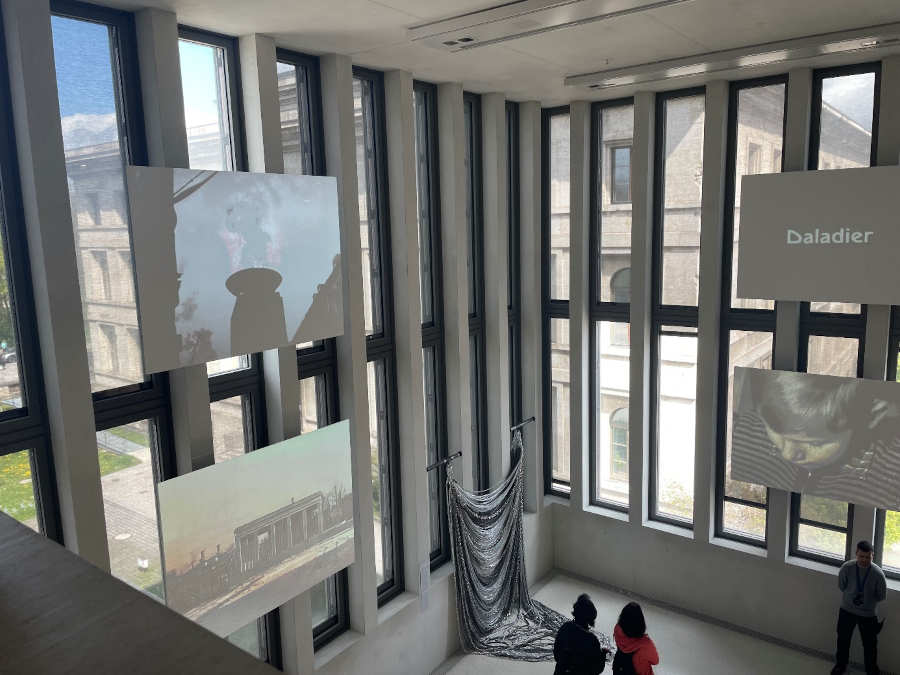
Our guides then took us through the third part of the exhibition, which takes us right to the heart of the Second World War, from the outbreak of war to the collapse of the Nazi regime. Aware of our more in-depth knowledge of this part of history, but also because of time constraints, our guides chose to take us through this section more quickly. We will therefore limit ourselves to a shorter description.
Here, the exhibition presents the crimes perpetrated by Munich's soldiers and police officers on the one hand, and everyday life in the city in wartime on the other, particularly for the persecuted. In Munich, it was impossible for the population not to notice the deportees, who arrived en masse from occupied territories to perform forced labour, particularly in the arms industry.
Yet acts of resistance were not commonplace, as the Nazi regime intensified its policy of persecution as the war progressed, and all those who opposed it faced dramatic consequences. This was particularly true in the final phase of the war, during which the Nazi regime pushed violence to the extreme. Many members of the Resistance paid for their courage with their lives. This was particularly true of the members of the German resistance group The White Rose, who were sentenced to death and executed.
On 30 April 1945, the American army entered Munich, marking the end of the Nazi regime. 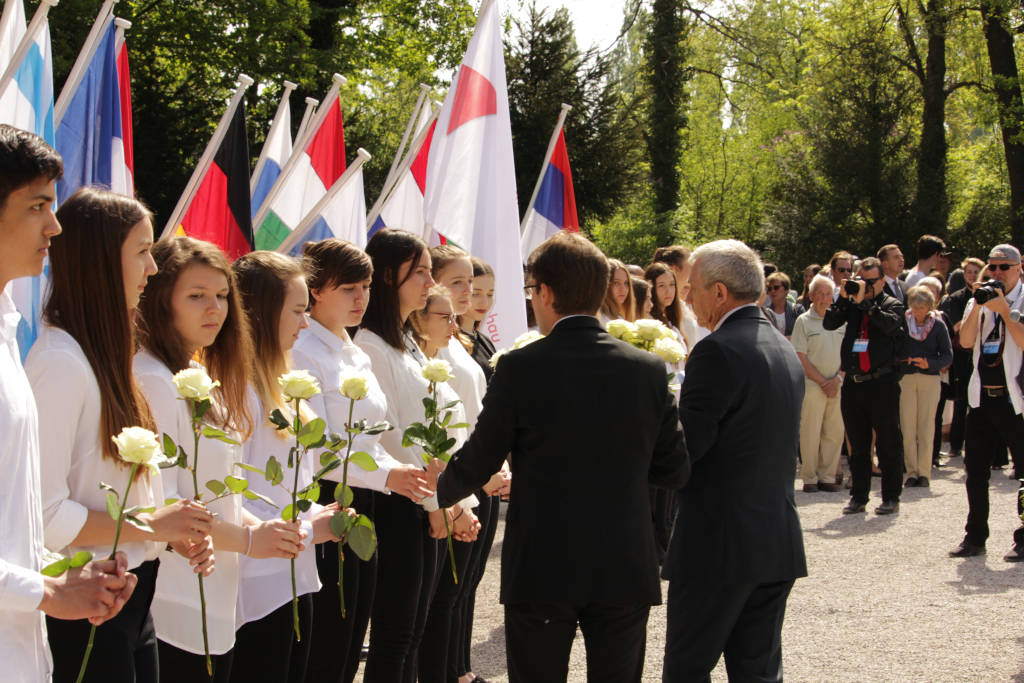
In addition to denazification and the reconstruction of Germany after its defeat, the final part of the exhibition looks at how the country came to terms with the crimes it had perpetrated. With the help of examples, the Centre shows us just how complicated this slow, hesitant and often awkward confrontation was for Munich and its inhabitants.
On the one hand, Munich managed to redemocratise itself after the war, but on the other, many people denied any personal responsibility or even refused to feel any sense of guilt. When they were tried, the guilty parties received light sentences, at least in most cases.
 Image Sandra Quentin Deadmarch sculpture
Image Sandra Quentin Deadmarch sculpture
For a long time after the war, German attitudes towards their Nazi past oscillated between shame, questioning, denial and even continuity. And although right-wing extremism and anti-Semitism have been severely condemned by public opinion since 1945, intolerance and discrimination persist within society, sometimes giving rise to acts of terrorism (the bombing of the Munich Oktoberfest in 1980, the murders committed by the neo-Nazi group Nationalsozialistischer Untergrund in the early 2000s, etc.).
These fluctuating attitudes can also be seen in Munich's architecture and in the way symbols of National Socialism have been treated since the end of the war. There was much debate about whether Nazi buildings should be destroyed or preserved, with opinions ranging from the desire to transform them into places dedicated to the memory and remembrance of the victims, to the desire to wipe the slate clean and avoid neo-Nazi gatherings on these sites.
Initially, the tendency was for Nazi buildings to be abandoned or destroyed, reflecting a desire to forget or deny the past. It was not until the 1980s that the citizens of Munich began to campaign for a culture of remembrance. The Documentation Centre for the History of National Socialism, which opened in 2015, is one of the results.
Finally, before we left, our guide alerted us to the return of the extremes to the forefront of the German political scene. The Alternative for Germany (AFD) party is enjoying growing success, with the far right reaching one of its highest levels of popularity since the post-war period. Against a backdrop of inflation, recession and concerns about the war in Ukraine, the current governing coalition is far from unanimously supported by the German population, which is of direct benefit to the AFD.
It's a situation that can be found in many European countries, and one that should obviously encourage us to redouble our vigilance.
Alicia GENIN
This article was previously published on the website of the French Amicale. link to the original French article can be found here.
A link to the website of the ns documentations centre can be found here.




